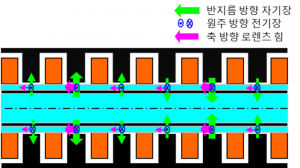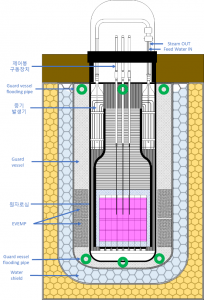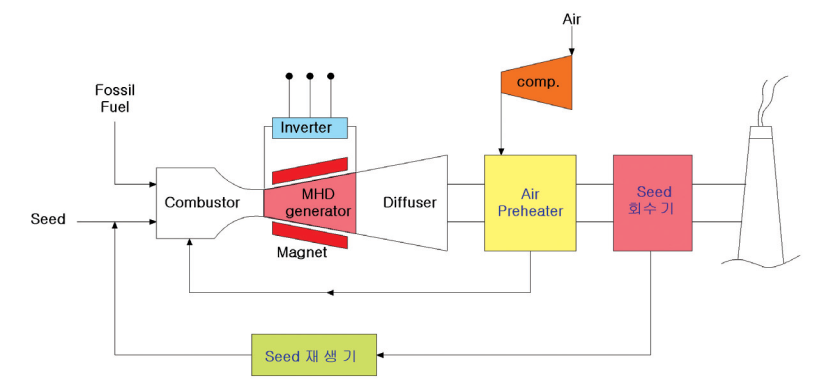Magnetohydrodynamics (MHD)
- Utilization of MHD
1. Electronic pump for transporting cooling water in nuclear reactors such as Sodium-cooled Fast Reactor (SFR)
2. Utilization of MHD power generation itself as the generation of new and renewable energy
- Development of Core Technology for Concept Design of Ultra-small Marine Reactor for Full Life without Replacement of Nuclear Fuel
Electromagnetic pumps are designed as shown in the picture above and can be divided into two main areas. The first area is the flow path in the form of an annular cross-section in which liquid metals are transferred from the inner and outer ducts and the space between them. In this case, ducts are constructed using SUS 316 materials, taking into account the reactivity of liquid metals, the prevention of distortion of magnetic fields, and physical strength. The second area is the electromagnet area consisting of inner and outer cores and coils. The main purpose of this area is to generate a time-variant magnetic field in the form of a sine wave.
In actual cases, an electromagnetic pump is used to transport sodium, the coolant of SFR. Because it has a very small volume compared to ordinary mechanical pumps, it can be developed with this advantage even in small reactors.
- High-temperature Combustion Flue Gas Plasma Generation Technology and 10 kW Class Magnetic Field Generator Electricity Production Technology
MHD generation is a generic method that uses exhaust gas generated by thermal power generation. Since exhaust gas itself is high temperature and wasted energy, it is a power generation method that obtains energy by reheating it to plasma it, and when applied to current thermal power generation, it can improve the efficiency of thermal power generation. The task is carried out through simulation because it is difficult to implement in a real environment.


